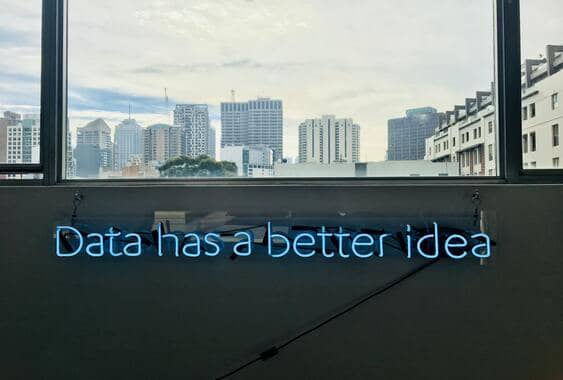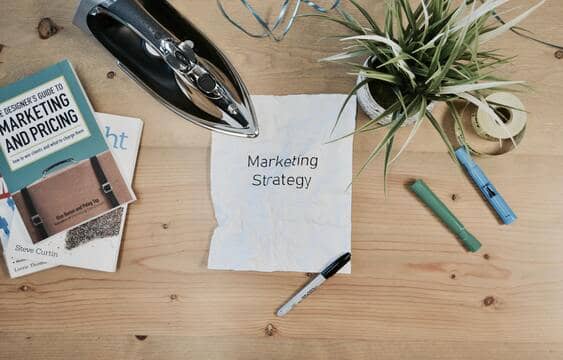If you love art and design but don’t cherish the lifestyle of the starving artist, then you may want to consider a career in graphic design. As a graphic designer, you know that people will see your work every day. They’ll register it, and they may well like it.
But even though it’s art, it exists in the strange space between anonymous tech and signature design. People will love your work without ever asking who designed it.de
In this guide, we’ll let you know how to get into this fascinating career path and the kind of opportunities you might find in graphic design.

SNHU
What Does a Graphic Designer Do?
A graphic designer’s responsibilities are varied but their main purpose is to ensure that any design or layout is visually appealing, aesthetically pleasing, and functionally sound. They focus on visuals which includes print graphics, computer graphics, illustrations, logo design, advertising graphics, drawings, and more. Graphic designers might also perform any of the following:
- coming up with creative design concepts
- managing the production of graphics by providing deadlines and specifications to the printer or web developer
- creating layouts and page designs that convey information clearly and effectively
Why Become a Graphic Designer?
The core of graphic design is visual communication. Anytime you see text and images on posters, billboards, logos, or even the T-shirt you’re wearing—all of these products are possible thanks to the creativity of graphic designers.
The work of graphic design professionals is everywhere. From the stock image you scrolled past on the last news article you read to today’s Google Doodle, all this is the work of graphic designers. It’s a career that gives you an excellent opportunity for expression and an unlimited number of platforms to exhibit your work.
Beyond the freedom to create, what else can you expect from this field? Keep reading to find out.
High Demand for Graphic Designers
Every company needs graphic design. The simple reason? Logos. While this is usually a one-off job, if you think of the world’s leading companies, someone had to create the Nike Swoosh and the golden arches of McDonald’s. The story of the Nike logo is a cautionary tale for graphic design professionals in itself: the designer only received a $35 payment.
However, the world is full of brands looking for the designer to make theirs the next logo to sear itself into the public’s consciousness. Brands will pay thousands for logo design, and there are an awful lot of companies out there needing logos.
Companies also need graphic designers for items such as:
- Designing the layout of magazines and brochures
- Designing adverts in print and web media — for example, web thumbnails are always in high demand
- Design of reports and official documents
Top Design Career for Creative People
Graphic design professionals tend to be very creative individuals. But compared to professionals in many creative industries, graphic designers can make good money doing what they love — the BLS estimates the median earnings of a graphic designer to be around $58,910 per year.
As creative types often prefer freelance roles to the 9-5 grind, many people find graphic design a suitable career for this reason. If you can build a solid professional network, opportunities will always present themselves without having to tie yourself to a single workplace for years and years.

Liberty University
Diversity of Jobs
The nature of freelancing means that you’ll pick up a fascinating array of work from different clients. However, even if you work in-house for a design agency, you’ll find that you have opportunities to express yourself on a wide variety of projects.
With a graphic design degree, you can work in fields including:
- Web design
- Creative directing
- Photo editing
- Architecture
- Engineering
- Video/film editing
- Animation
- Multimedia artist
- Product design
You may find that a particular type of work (such as brochure design) suits your talents and style best or that you develop a style that attracts clients from specific industries. Whatever path you pursue, this field lets you pursue your artistic passion while making a lucrative career out of it.
Education Pathways To Become a Graphic Designer
There are various educational pathways you can pursue to become a graphic designer, each offering unique advantages depending on your career goals, time commitment, and resources. Below are the most common options:
Associate Degree in Graphic Design
An associate degree is a two-year program that focuses on foundational design skills and technical training in graphic design software. These programs are often offered by community colleges or technical schools.
- Advantages: Affordable and shorter duration; prepares you for entry-level roles or to transfer to a bachelor’s degree program.
- Common Careers: Junior Designer, Production Artist, Freelance Graphic Designer.
- Best for: Entry-level roles or preparing to transfer to a four-year program.

Rasmussen University
Bachelor’s Degree in Graphic Design or a Related Field
A bachelor’s degree in graphic design, visual communication, or a related field is the most traditional pathway to enter the profession. These programs typically take four years to complete and cover a comprehensive range of topics, including design principles, typography, color theory, software tools, and portfolio development.
- Advantages: Access to advanced skills, networking opportunities, and internships; prepares you for competitive roles.
- Common Careers: Graphic Designer, Brand Designer, Art Director.
- Best for: Individuals seeking formal education and foundational knowledge with access to career services, internships, and networking opportunities.

Savannah College of Art and Design
Master’s Degree in Graphic Design
A master’s degree is an advanced program designed for professionals who want to specialize further or transition into leadership, teaching, or research roles. These programs typically take 1–2 years and focus on design theory, innovation, and advanced portfolio work.
- Advantages: Deepens expertise; opens doors to senior roles, academia, and design strategy positions.
- Common Careers: Senior Designer, Creative Director, Design Educator, UX Researcher.
- Best for: Professionals with experience who want to advance their careers or explore a niche within the field.

Liberty University
Certificate or Diploma Programs
Certificate or diploma programs in graphic design are shorter, often lasting 6–12 months. These programs are ideal for individuals looking to quickly gain practical skills and enter the workforce.
- Advantages: Fast-track option; focused on hands-on skills and software training.
- Common Careers: Freelance Designer, Production Assistant, Marketing Designer.
- Best for: Quick skill development or career changers looking to enter the field with foundational knowledge.

SNHU
Online Bootcamps and Short Courses
Graphic design bootcamps and short courses are intensive programs designed to teach specific skills in a condensed time frame, ranging from a few weeks to a few months. Many of these are available online and include real-world projects to build your portfolio.
- Advantages: Flexible learning; focuses on industry-relevant skills; great for career changers or upskilling.
- Common Careers: Digital Designer, User Interface (UI) Designer, Freelance Graphic Designer.
- Best for: Flexible learners or those who want to gain skills quickly and affordably.

Penn Foster
Self-Taught Pathway
Some graphic designers are entirely self-taught, relying on free or affordable resources such as online tutorials, YouTube videos, and design blogs. This pathway requires strong discipline, creativity, and a commitment to building a portfolio.
- Advantages: Cost-effective and flexible; learn at your own pace.
- Common Careers: Freelance Designer, Digital Illustrator, Social Media Designer.
- Best for: Highly motivated learners or those on a budget.
Resources:
- YouTube tutorials (e.g., The Futur, Canva Design School)
- Free or low-cost software like Canva, Figma, and GIMP.
- Books like “Graphic Design: The New Basics” by Ellen Lupton.
Apprenticeships or Internships
Apprenticeships and internships provide hands-on experience and mentorship from experienced graphic designers. These opportunities can be found through companies, design studios, or creative agencies.
- Advantages: On-the-job learning; builds a professional network.
- Common Careers: Graphic Designer, Visual Designer, Marketing Creative.
- Best for: On-the-job learners who prefer practical experience over traditional classroom education.
The educational pathway you choose will depend on your career goals, budget, and timeline. If you’re aiming for advanced roles, a degree may be your best option. For those looking for flexibility or quick entry into the field, bootcamps, certificates, or self-learning could be a great fit. Regardless of the pathway, focus on building a strong portfolio to showcase your skills to potential employers or clients.
Other Programs That Can Prepare You to Become a Graphic Designer
Yes, several other degrees besides a Graphic Design major can prepare you for a career in graphic design. These degrees often overlap with the skills and knowledge required for the field and can be tailored toward graphic design through elective courses, projects, or internships. Here’s a list of alternatives:
1. Visual Arts or Fine Arts (BFA)
- Focus: Broad artistic training, including drawing, painting, sculpture, and digital media.
- Relevance: Develops foundational art skills, creative thinking, and an understanding of aesthetics, which are essential in graphic design.
- Tip: Choose electives or specialize in digital media, visual communication, or graphic design.
2. Digital Media or Multimedia Arts
- Focus: Combines traditional design with modern technology, emphasizing animation, motion graphics, web design, and video editing.
- Relevance: Ideal for graphic designers interested in interactive media, motion graphics, or video content creation.
3. Communication Design
- Focus: Explores how visual elements communicate messages, often blending graphic design, branding, and advertising.
- Relevance: Perfect for those interested in branding, marketing, or user experience (UX) design.
4. Advertising or Marketing
- Focus: Teaches the principles of advertising, branding, and campaign development.
- Relevance: Graphic designers with a marketing background are highly valued in advertising agencies or in-house marketing teams.
- Tip: Gain graphic design skills through electives or certifications.
5. User Experience (UX) or User Interface (UI) Design
- Focus: Emphasizes designing intuitive, user-friendly digital interfaces and experiences.
- Relevance: These degrees are ideal for aspiring graphic designers interested in app or web design, where usability and aesthetics converge.
6. Web Design and Development
- Focus: Combines graphic design principles with web development skills like HTML, CSS, and JavaScript.
- Relevance: Prepares designers for creating visually appealing and functional websites.
7. Illustration
- Focus: Covers traditional and digital drawing techniques for storytelling, advertising, or branding.
- Relevance: Ideal for graphic designers specializing in custom artwork, character design, or branding.
Making Non-Design Degrees Work for Graphic Design
Regardless of your degree, you can prepare for a graphic design career by:
- Taking Design Courses: Through electives or online platforms like Coursera, Skillshare, or Udemy.
- Gaining Software Proficiency: Learning tools like Adobe Creative Suite, Figma, or Canva.
- Building a Portfolio: Include design projects from coursework, internships, or freelance work.
- Pursuing Internships: Gain hands-on experience in design settings.
- Networking: Join creative communities and attend design workshops or conferences.
Skills Required to Become a Graphic Designer
You’ll pick up many skills in your studies related to graphic design. However, you should also develop skills that will help you find clients and succeed as a designer. These include:
1. Core Design Skills
- Typography: Understanding font styles, spacing, and readability.
- Color Theory: Knowing how to use colors effectively to convey emotion and meaning.
- Composition and Layout: Creating visually appealing and balanced designs.
- Visual Hierarchy: Arranging elements to guide the viewer’s attention.
- Branding: Designing for consistency in logos, brand identity, and marketing materials.
2. Technical Skills
- Proficiency with Design Software:
- Adobe Creative Suite (Photoshop, Illustrator, InDesign)
- Figma or Sketch (for UI/UX design)
- Canva (for quick design tasks)
- Web Design Tools:
- Basic understanding of HTML/CSS for web graphics.
- Platforms like WordPress for digital design.
- Motion Graphics:
- Tools like Adobe After Effects or Blender for animation.
- Print Production Knowledge:
- Understanding resolution, bleed, and CMYK vs. RGB for print vs. digital work.
3. Creative Thinking
- Problem-Solving: Developing creative solutions to design challenges.
- Storytelling: Communicating ideas visually to tell a compelling story.
- Adaptability: Innovating and experimenting with new design trends.
4. Communication Skills
- Client Collaboration: Understanding and interpreting client needs.
- Presentation: Clearly explaining design decisions and concepts to stakeholders.
- Teamwork: Working with writers, marketers, and developers.
5. Time Management and Organization
- Meeting Deadlines: Handling multiple projects with competing timelines.
- Project Management: Using tools like Trello, Asana, or Slack to stay organized.
- Attention to Detail: Ensuring error-free and high-quality work.
6. Soft Skills
- Creativity: Bringing fresh ideas to every project.
- Adaptability: Keeping up with design trends and technology changes.
- Feedback Handling: Being open to constructive criticism and revisions.
- Self-Motivation: Managing freelance or remote work independently.
Bonus: Specialized Skills
- UX/UI Design: Designing user-friendly digital interfaces.
- Data Visualization: Translating data into infographics and charts.
- Photography: Using or editing custom visuals for projects.
- Coding Basics: Enhancing interactive designs with HTML/CSS or JavaScript.
Graphic Designer Career Growth
Career growth in graphic design will vary depending on your goals and the level of satisfaction in your role. Here are some examples of career progression in graphic design:
As a graphic designer, there are numerous career growth and advancement opportunities that can lead to specialized roles, leadership positions, or even entrepreneurship. Here’s an overview of potential paths you can take:
1. Specialization Opportunities
Focusing on a niche can increase your demand and earning potential. Popular specializations include:
- UI/UX Design: Designing user-friendly interfaces for websites, apps, and software.
- Motion Graphics and Animation: Creating dynamic visuals for video, film, or online content.
- Brand Identity Design: Crafting logos, brand guidelines, and comprehensive visual branding.
- Illustration: Offering custom artwork for books, advertisements, or products.
- Packaging Design: Developing eye-catching designs for physical products.
- Environmental Design: Creating visual elements for physical spaces, like trade shows or retail stores.
2. Leadership and Management Roles
As you gain experience, you might transition into leadership roles where you oversee projects or teams:
- Art Director: Leading a creative team and ensuring the visual style aligns with a brand’s identity.
- Creative Director: Overseeing the entire creative strategy for a company or project, managing multiple teams.
- Design Manager: Balancing design execution with strategic planning and resource management.
3. Freelancing and Entrepreneurship
Many graphic designers opt for independent careers, which can offer creative freedom and financial growth:
- Freelance Graphic Designer: Working with multiple clients on varied projects.
- Studio Founder: Starting your own design agency.
- Consultant: Advising businesses on design strategy and branding.
4. Advanced Technical Roles
Expanding your technical skills can open doors to advanced roles in design and technology:
- 3D Designer: Creating three-dimensional models for gaming, VR, or architecture.
- Web Developer/Designer: Combining graphic design with web development to create websites.
- Augmented Reality (AR) Designer: Designing interactive AR experiences for marketing, education, or entertainment.
5. Cross-Disciplinary Roles
Leverage your design expertise to branch into related fields:
- Marketing Specialist: Using design skills to support digital marketing campaigns.
- Product Designer: Collaborating on the look, feel, and functionality of physical or digital products.
- Content Creator: Producing social media or multimedia content for brands.
6. Industry Transitions
Your design expertise can be applied in other industries:
- Tech Industry: Contribute to app development or SaaS design projects.
- Film and Media: Work on visual effects, storyboarding, or set design.
Education: Become a design educator or create learning materials for design students.

Graphic Designer Career Trajectory (Entry to Senior Roles)
The career trajectory for graphic designers typically progresses from foundational roles focused on learning and executing to higher-level positions involving leadership, strategy, and innovation. Below is a typical pathway, although individual growth can vary based on skills, networking, and specialization:
Entry-Level Roles (0-3 Years)
These roles focus on building foundational skills and gaining experience:
- Junior Graphic Designer:
- Responsibilities: Supporting senior designers, creating simple designs, and working on small projects.
- Skills Required: Proficiency in design software (e.g., Adobe Creative Suite), attention to detail, and time management.
- Production Artist:
- Responsibilities: Finalizing designs, preparing files for print or digital use, and ensuring quality control.
- Skills Required: Understanding of production processes, file formats, and print/digital requirements.
- Freelance Designer (Entry-Level):
- Responsibilities: Working on small, independent projects for clients.
- Skills Required: Basic project management and client communication skills.
Mid-Level Roles (3-7 Years)
At this stage, designers take on more complex projects and often lead smaller initiatives:
- Graphic Designer:
- Responsibilities: Creating designs for campaigns, branding, and multimedia; collaborating with teams and clients.
- Skills Required: Strong design principles, creative problem-solving, and intermediate technical expertise.
- Visual Designer:
- Responsibilities: Focusing on aesthetics and design elements for websites, apps, and digital platforms.
- Skills Required: Experience in UI/UX design and knowledge of web-specific tools (e.g., Figma, Sketch).
- Marketing/Communications Designer:
- Responsibilities: Designing assets for marketing campaigns, social media, and events.
- Skills Required: Understanding of branding, marketing strategy, and audience targeting.
- Freelance Designer (Experienced):
- Responsibilities: Managing multiple clients and larger-scale projects.
- Skills Required: Portfolio development, pricing strategy, and advanced client relationship skills.
Senior-Level Roles (7-10+ Years)
Senior roles involve leadership, strategy, and higher-level responsibilities:
- Senior Graphic Designer:
- Responsibilities: Leading design projects, mentoring junior designers, and presenting concepts to clients.
- Skills Required: Advanced design and software skills, project management, and leadership abilities.
- Art Director:
- Responsibilities: Overseeing the creative vision and ensuring designs align with branding goals.
- Skills Required: Team leadership, client interaction, and a strong understanding of creative strategy.
- UI/UX Designer:
- Responsibilities: Designing user interfaces and improving user experiences for digital products.
- Skills Required: Knowledge of human-centered design, wireframing, prototyping, and usability testing.
- Motion Graphics Designer/Animator:
- Responsibilities: Creating animated visuals for videos, ads, or multimedia projects.
- Skills Required: Expertise in motion graphics software (e.g., After Effects, Cinema 4D).
Leadership and Executive Roles (10+ Years)
These roles focus on strategic decision-making and organizational leadership:
- Creative Director:
- Responsibilities: Setting the creative direction for projects, managing creative teams, and driving innovation.
- Skills Required: Visionary thinking, business acumen, and strong communication skills.
- Design Manager:
- Responsibilities: Managing teams, budgets, and resources while maintaining design quality and efficiency.
- Skills Required: Team management, operational planning, and stakeholder collaboration.
- Brand Strategist:
- Responsibilities: Developing and executing branding strategies to align with business goals.
- Skills Required: Deep understanding of branding, consumer behavior, and market trends.
- Entrepreneur/Studio Owner:
- Responsibilities: Running a design studio or freelancing business, managing clients, and leading creative projects.
- Skills Required: Business development, financial management, and marketing expertise.
Takeaways
You might fall in love with the flexibility of freelance life. You might find a dream job at a top company where your designs are on display in front of millions or even billions. Or you might rise to a top position, such as art director of a creative agency, or even start your own.
Whatever style of work you enjoy, there’s so much variety in graphic design careers that we know you’ll find the perfect role for your talents.



